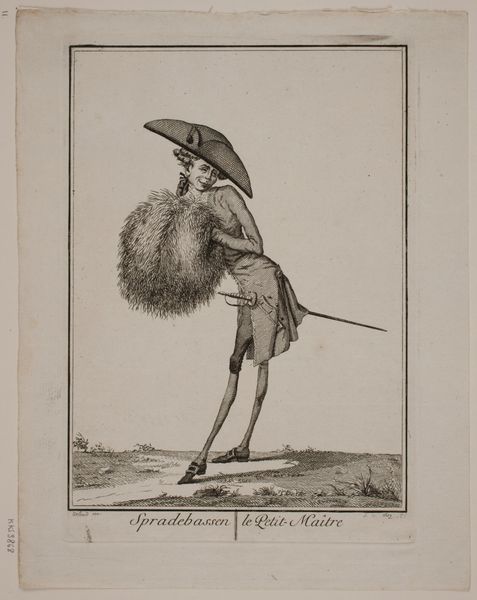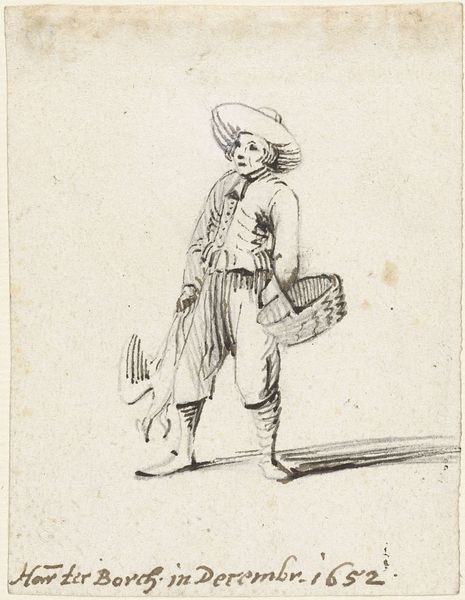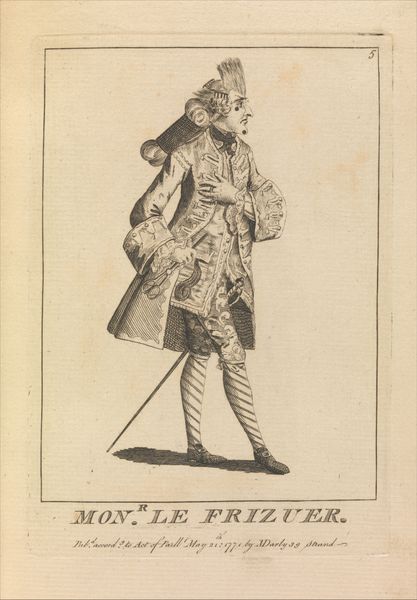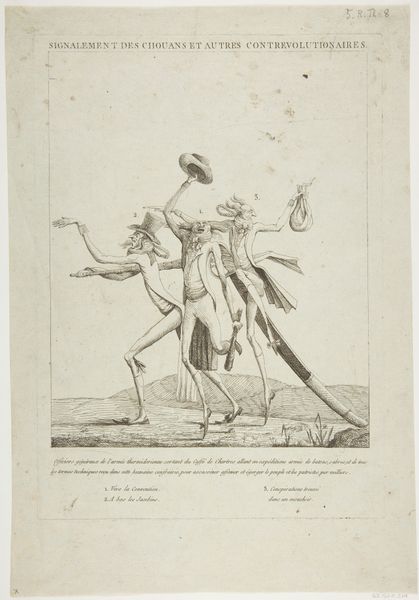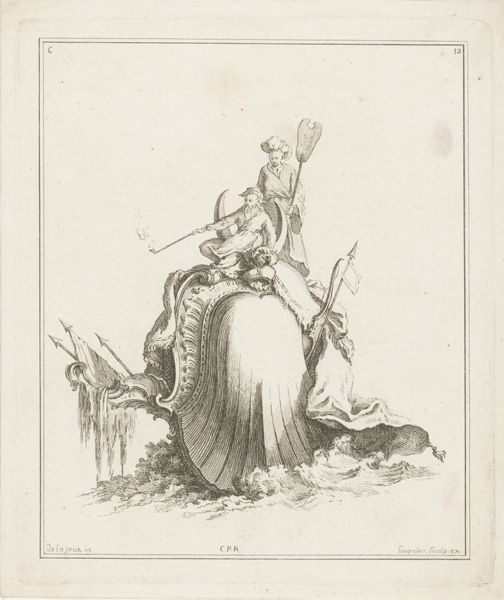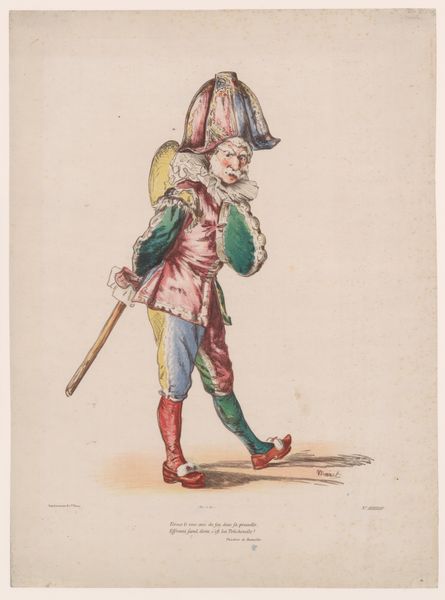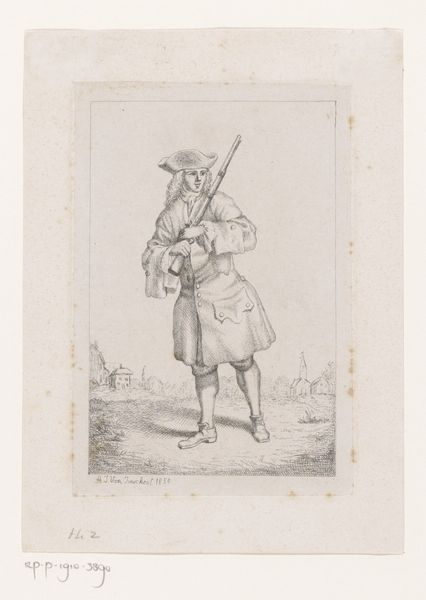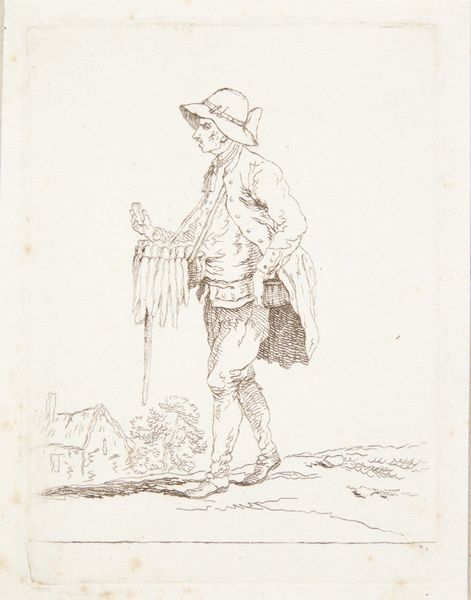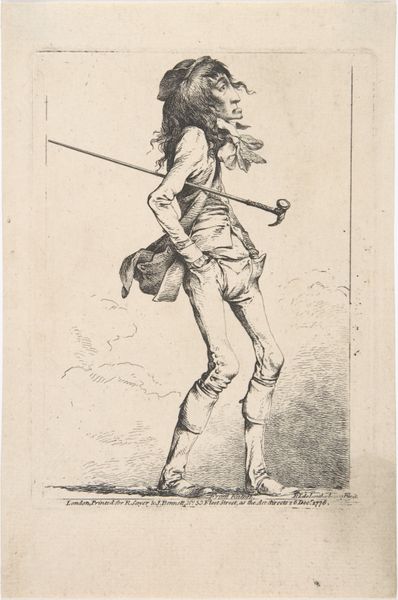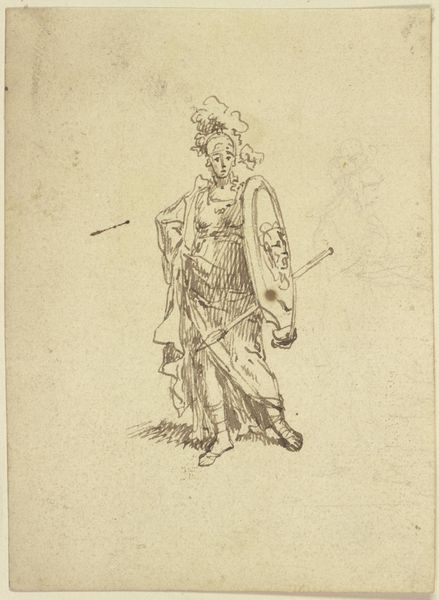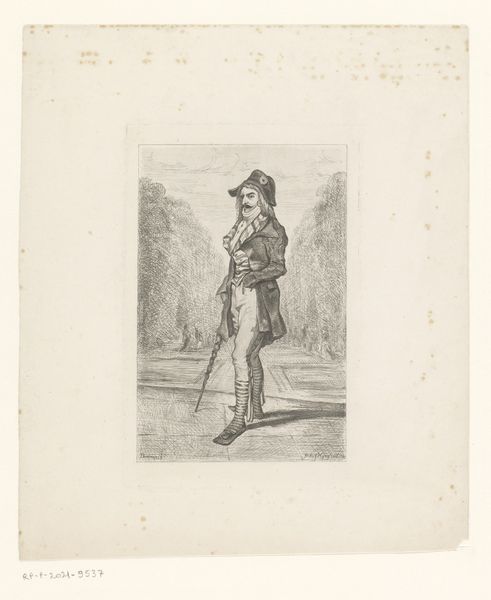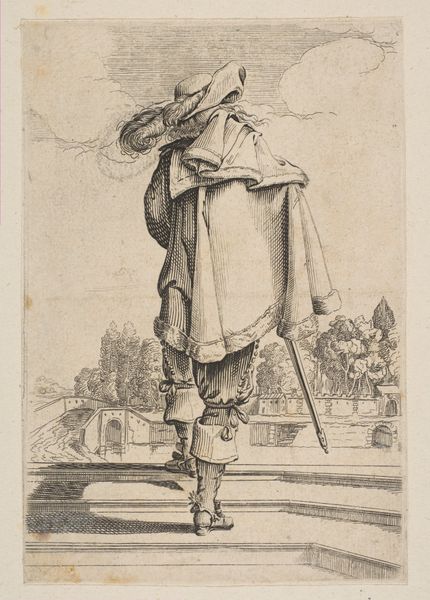
Dimensions: sheet: 10 11/16 x 8 1/4 in. (27.1 x 21 cm)
Copyright: Public Domain
Editor: Here we have "The Feminine Gender," a print by Henry Kingsbury from 1787. It's a caricature, a drawing made with etching techniques. What do you see when you look at this work? Curator: What I see is a critical commentary embedded in the very process of production. Etching, a printmaking method reliant on acid to "bite" into the metal, allowed for relatively quick replication, which democratized images and opinions. So, the choice of etching itself implicates this caricature in a wider field of consumption and social critique. Consider how labor, and material culture are represented through clothing. Editor: You're suggesting that the medium itself plays a role in the message? The fact that it's a print makes it part of a broader critique? Curator: Exactly. The relative ease of reproduction afforded by etching meant these kinds of images could circulate widely, feeding and shaping public opinion, and of course shaping consumption. Think about how this character is constructed through fashion: the oversized hat, the wig, the meticulously striped waistcoat. All signals of status and, here, potential excess. Do these sartorial choices simply mock effeminacy, or is Kingsbury offering a broader social critique by conflating masculinity with performance, appearance, and consumption? Editor: That’s a fascinating point. The attention to detail in rendering these material items makes me wonder about Kingsbury’s own position – was he ridiculing this figure or just observing and documenting changing social norms? Curator: The production and distribution of images like this relied on a whole network of artisans and merchants, contributing to a culture of visual critique. What do you think about the implications of its mass dissemination in shaping cultural values related to gender, class, and consumption in the late 18th century? Editor: It's given me a whole new way of viewing not just this artwork, but art production as a process deeply embedded in its social and economic context. Curator: And it reminds us that art isn't just about aesthetics; it's about the labor, materials, and power dynamics that shape its creation and reception.
Comments
No comments
Be the first to comment and join the conversation on the ultimate creative platform.
